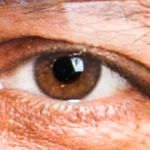- Home
- Photoshop ecosystem
- Discussions
- Re: Best way to handle photos on white background ...
- Re: Best way to handle photos on white background ...
Best way to handle photos on white background for a print project
Copy link to clipboard
Copied
I have a series of photos in jpeg format. They are product shots of objects on white backgrounds. Some of them have nice, realistic shadows. These images are going into an InDesign document for a catalog that will be printed. Do I need to remove the "white" of the jpeg and replace it with transparency? I've experimented with doing that quickly in the layer blending options. It is not ideal - it often reduces highlights of the object itself to transparency, and kind of makes a mess of the nice shadows by giving them a weird edge.
Explore related tutorials & articles
Copy link to clipboard
Copied
Why might you want to replace the white background of the product shots and replace it as a "cut-out" with a transparent background?
Copy link to clipboard
Copied
I'm happy to not have to change it, but I am worried about the "white" of the photo printing as a tint of gray, when what I really want is paper white.
Copy link to clipboard
Copied
1) Place a typical image in an InDesign document and see how it looks (maybe print out a copy too).
2) If a background tint appears, lighten the pics very slightly using in Photoshop, for example, the Levels tool (you can use the Eye-dropper tool to check again if there are any pixels in the background).
3) Ensure the photos you Place in InDesign have an Effective PPI of between 200 and 400PPI (Pixels per inch), you can check this in the Links panel.
4) You can Place native Photoshop images (PSD) in InDesign and round trip between the two applications.
Copy link to clipboard
Copied
When your lithographer provides you with Profile specifications, he will include the highlight and shadow Endpoints (sometimes called Aim Points). The highlight end numbers indicate the lightest tone (dot values) the plate and paper combination is capable of delivering to the printed sheet. If you want to maintain the shape of the image area, use the endpoint as your highest highlight value. If you want to fade to pure white, your setting should be a value lighter than that endpoint value. Your highlight eyedropper setting in Curves should prove helpful.
Copy link to clipboard
Copied
What RGB value is your white background? You might need to lighten the background closer to 255 in order to avoid a tint. As norman.sanders mentioned, your printer can assist you with the desired numbers.
Copy link to clipboard
Copied
When exporting your design to PDF, you can check the "colour" of the white background. (Print production->Output preview).
If it is perfectly white or near to white, it is ok. The exact values can be given by your printer. My experience shows, that values below 5% are very difficult to print.
If not, you need to rework your pictures by lightning up the background. Important is the visual aspect. If you have hard edges, they will be perceived, even if the difference is minimal. If, however, there is a fade to pure white, nobody will get it, except if the "white" is more yellow or grey then white.
Be careful when judging the final output. A laser printer is not that accurate then an offset printer and cut's off earlier. The prepress operator can judge the final output and can also provide colour accurate proof prints. Only a proof print will show the correct appearance in the final print.
Copy link to clipboard
Copied
Thank you, that is practical and helpful. I am color managing the photos and the InDesign docment - can I get an accurate read of the whiteness whilst I am still in PS?
Copy link to clipboard
Copied
Yes use the Eye-dropper tool and check in the Info panel.
Copy link to clipboard
Copied
Yes, you can check in Photoshop (as https://forums.adobe.com/people/Derek%20Cross said) and in Acrobat. I'm currently not sure about Indesign because Indesign shows a proxy image.
Copy link to clipboard
Copied
Copy link to clipboard
Copied
All white background images should have the same background highlight levels, around 245-250 neutral in the R, G, B channels so they have a minimum dot and are not "lost" or "floating" on the page. In CMYK this would be something like 5c3m3y etc. This is even more important if product images are in a grid layout where uniformity or lack of is easily visible.
Find more inspiration, events, and resources on the new Adobe Community
Explore Now


